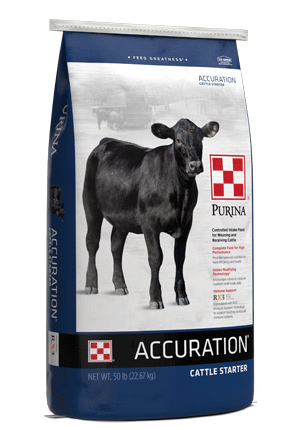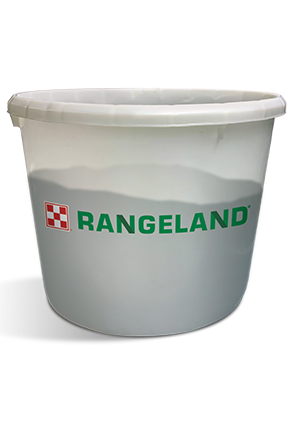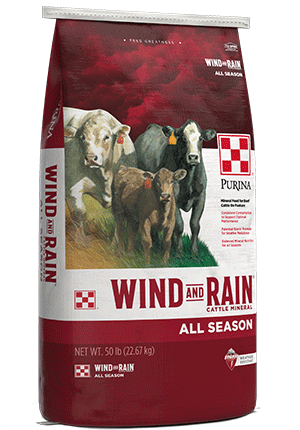
Help Keep Your Cattle Safe with Feed Biosecurity
Management : Grower & Finisher
Nutrition : Minerals
Nutrition : Supplements
While the threat of communicable diseases is lower in the cattle industry than in other livestock sectors like swine and poultry, having a biosecurity management plan in place is still important. Protecting your farm from outside pathogens helps your business to continue unaffected with productive, healthy cattle.
Use a combination of the following feed management practices to help reduce the risk of introducing and transmitting diseases into your herd, along with ensuring you maximize your feed resources.
If you are sourcing feed that hasn’t gone through quality checks, inspect it yourself to ensure it’s free of rodent droppings, insects, mold, unusual odors, foreign materials or other contaminants. If any of this is present, dispose of the feed immediately.
Feed should be stored in a well-ventilated, dry area. If possible, store feed in bulk bins or containers with tight-fitting lids. For bagged feed or mineral, use a pallet system to hold the bags off the ground and to reduce the risk of the feed getting wet.
Moisture is one of the main enemies of stored feed. If feed gets wet, it creates the right environment for mold growth. If wet enough, feed can rot, which invites insects to lay larvae in the feed and cause a hatch.
Clean up any feed spills as they can attract wildlife, encourage spoilage and serve as a breeding ground for pests. Keep track of the pests you see on your operation and implement new management practices if a pest control problem arises.
Avoid putting new feed over old feed in the bunk. Over time, feed leftovers will spoil and your cattle will stop eating the feed on top due to the smell. This can reduce consumption even more.
Does your cattle nutrition program stack up? Find out with a Proof Pays trial.
Cattle Fetal Programming 101
Weaning Calves? Know Your Starter Feed Basics
Create a Calf Health and Marketing Edge
Use a combination of the following feed management practices to help reduce the risk of introducing and transmitting diseases into your herd, along with ensuring you maximize your feed resources.
Check and double-check
Feed biosecurity begins with the quality of the feed and ingredients you are purchasing. Source your feed from a reliable supplier with quality assurance programs in place to ensure animals receive exactly what they need to reach their full potential.If you are sourcing feed that hasn’t gone through quality checks, inspect it yourself to ensure it’s free of rodent droppings, insects, mold, unusual odors, foreign materials or other contaminants. If any of this is present, dispose of the feed immediately.
High, dry and sealed
Your goal with feed biosecurity is to have all the feed you purchase be fed to and eaten by your cattle. Proper feed storage is a key factor in meeting that goal.Feed should be stored in a well-ventilated, dry area. If possible, store feed in bulk bins or containers with tight-fitting lids. For bagged feed or mineral, use a pallet system to hold the bags off the ground and to reduce the risk of the feed getting wet.
Moisture is one of the main enemies of stored feed. If feed gets wet, it creates the right environment for mold growth. If wet enough, feed can rot, which invites insects to lay larvae in the feed and cause a hatch.
Pest control is a must
If you are storing feed, pest control for rodents and other pests is not an option – it’s a must. In addition to destroying and eating feed, rodents carry diseases that can be transmitted to cattle. Other pests, such as birds, insects and local wildlife, can also carry and spread diseases that pose a threat to your operation.Clean up any feed spills as they can attract wildlife, encourage spoilage and serve as a breeding ground for pests. Keep track of the pests you see on your operation and implement new management practices if a pest control problem arises.
Keep it clean
Regularly inspecting and cleaning out feed troughs is a great way to track your cattle’s feed intake and prevent leftover feed from spoiling. Check for uniformity of consumption along the bunk and investigate areas where feed is being left.Avoid putting new feed over old feed in the bunk. Over time, feed leftovers will spoil and your cattle will stop eating the feed on top due to the smell. This can reduce consumption even more.
Small changes make a big difference
Making small changes to how you manage your feed can make a world of difference in reducing the risk of feed biosecurity issues in your operation and lowering the financial loss due to wasted feed.Does your cattle nutrition program stack up? Find out with a Proof Pays trial.
Related Articles:
Boost Your Cattle Respiratory Vaccine ProgramCattle Fetal Programming 101
Weaning Calves? Know Your Starter Feed Basics
Create a Calf Health and Marketing Edge




